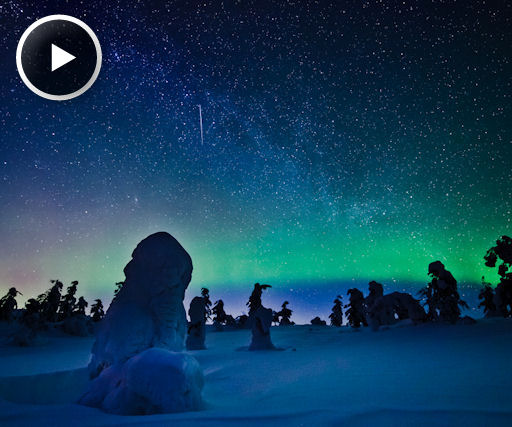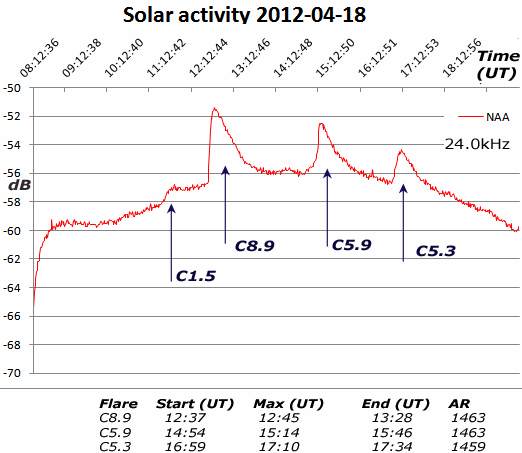Metallic photos of the sun by renowned photographer Greg Piepol bring together the best of art and science. Buy one or a whole set. They make a stellar gift. | | | UNUSUAL 3D METEOR PHOTO-OP: This weekend, NASA scientists, amateur astronomers, and an astronaut on board the International Space Station will attempt the first-ever 3D photography of meteors from Earth and space. The rare photo-op occurs during the peak of the Lyrid meteor shower. Get the full story from Science@NASA. [meteor radar] [Lyrid video] ARCTIC AURORA RECAP: As the midnight sun returns to the Arctic, northern sky watchers are looking back on the 2011-2012 aurora season with pleasure. "There has definitely been increased activity this season as the solar cycle heads toward a maximum in 2013," says photographer Ole C. Salomonsen. "To commemorate the season I have assembled a video from photos I took in northern parts of Norway, Finland and Sweden from fall 2011 to spring 2012." Click to play:  . .
"This video marks the end of a very exciting aurora season for me," says Salomonsen. "It has made me very excited for the upcoming season (autumn 2012), and what it has to offer in terms of celestial lights and experiences!" This doesn't mean that auroras are gone for everyone. The Arctic Circle may be brightening with summer sunlight, but lower latitudes still have enough darkness for Northern Lights. Indeed, upper-middle latitude sky watchers should be alert for auroras on April 20th. NOAA forcasters estimate a 30% chance of geomagnetic storms as Earth enters a region of negative polarity IMF. Aurora alerts: text, voice. ION WAVES IN EARTH'S ATMOSPHERE: Today, a volley of C-class solar flares sent waves of ionization rippling through the atmosphere high over Europe. Dave Gradwell of Birr, Ireland, detected the disturbances using a VLF radio monitoring system: 
The source of the flares is a sunspot AR1463 in the sun's southern hemisphere--one of several active regions popping up around the solar disk. With sunspot numbers on the rise, more flares and ion waves are likely in the days ahead. Stay tuned. Solar flare alerts: text, voice. Potentially Hazardous Asteroids ( PHAs) are space rocks larger than approximately 100m that can come closer to Earth than 0.05 AU. None of the known PHAs is on a collision course with our planet, although astronomers are finding new ones all the time. On April 19, 2012 there were 1287 potentially hazardous asteroids. Notes: LD means "Lunar Distance." 1 LD = 384,401 km, the distance between Earth and the Moon. 1 LD also equals 0.00256 AU. MAG is the visual magnitude of the asteroid on the date of closest approach. | | The official U.S. government space weather bureau | | | The first place to look for information about sundogs, pillars, rainbows and related phenomena. | | | Researchers call it a "Hubble for the sun." SDO is the most advanced solar observatory ever. | | | 3D views of the sun from NASA's Solar and Terrestrial Relations Observatory | | | Realtime and archival images of the Sun from SOHO. | | | from the NOAA Space Environment Center | | | the underlying science of space weather | | 
